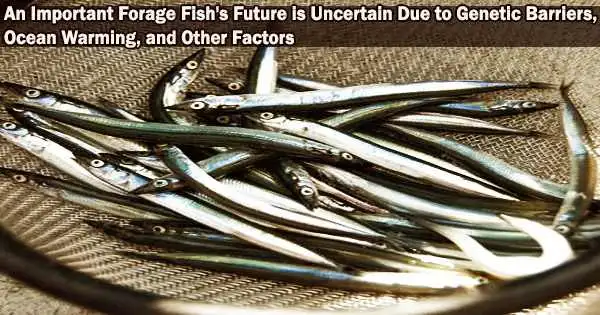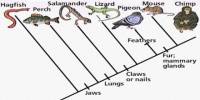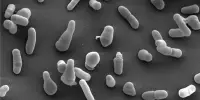One would anticipate that people living in the vast oceans would be able to travel widely and that populations of different species would naturally mix. For the sand lance, a crucial forage fish, however, it doesn’t seem that this is the case.
“Sand lance are small schooling fish impressively rich in lipids, which makes them a fantastic and significant food source for at least 70 different species ranging from whales and sharks to seabirds,” says UConn Associate Professor of Marine Sciences Hannes Baumann.
From the waters off New Jersey all the way up to Greenland, the Northern Sand Lance can be found. The question of whether or if there are genetically distinct groups of sand lance piqued the curiosity of researchers like Baumann and Ph.D. candidate Lucas Jones. The ICES Journal of Marine Science publishes their findings.
In light of the fact that the locations where sand lance reside are warming more quickly than many other parts of the earth as a result of climate change, Baumann notes that these are significant considerations to address when thinking about conservation and sustainable management of the species.
It is a difficult effort to collect fish from such a wide variety, but two years ago, Baumann and Jones started asking other scientists if they had any extra tissue samples. In addition to co-authors from Canada and Greenland who supplied samples, as well as co-authors from Cornell University who helped sequence and analyze the data, Baumann gives thanks to a global team of colleagues for their work.
Using a method known as low-coverage whole genome sequencing, Baumann, Jones, and the team were able to sequence and examine roughly 300 samples from various places all around the sand lance’s range. They also sequenced the sand lance genome’s first reference genome.
Briefly stated, according to Baumann, they discovered a region where a genetic break takes place on the Scotian Shelf, off the coast of Nova Scotia. With sections of the genome, particularly on chromosomes 21 and 24, changing fairly drastically between the two groups one north and one south of the divide the researchers were able to identify between them. It makes sense, according to Baumann, to wonder how these variances are feasible in the absence of overt physical boundaries like a mountain range.
Parts of the genome in many species have what we call a ‘genetic inversion,’ which means that the genes on the chromosome from one parent have a certain order and the genes on the same chromosome that come from the other parent that code for the same thing, and they’re the same area, but they’re flipped.
Hannes Baumann
“That is the scientific conundrum,” says Baumann, and the answer, it appears, lies in the currents.
“When fish from the north reproduce and drift south, they are genetically less adapted to warmer southern waters, even if it’s five or six degrees warmer in the winter, they are just not surviving,” Baumann says. “These populations may be linked by the ocean currents, but the realized connectivity is basically zero.”
This discovery is unique to the sand lance, but it has been made in other species including lobsters, fish, and scallops. This study also offers more proof that there is a temperature differential at the Scotian Shelf and demonstrates how crucial temperature is to survival.
“Example after example shows that the ocean is not as homogeneous a place as expected, and there are all kinds of things that prevent that constant mixing,” Baumann says. “We found another striking example of that.”
The question is how groups may remain distinct despite frequently coming into contact with other genotypes, according to Baumann, when adaptation is discovered in an environment where mixing is constant, such as the ocean. Powerful genomic techniques, like those employed in this work, are useful in this situation.
“Parts of the genome in many species have what we call a ‘genetic inversion,’ which means that the genes on the chromosome from one parent have a certain order and the genes on the same chromosome that come from the other parent that code for the same thing, and they’re the same area, but they’re flipped,” Baumann says.
Since recombination is prevented by these inversions, the genes are carried down through the generations and are crucial for adaptability.
“We discovered on chromosomes 21 and 24 there are whole regions that are completely different and that is like the trademark signature of what we call an inversion because there’s no recombination going on.”
Knowing there are genetic and biological barriers on the Scotian Shelf, according to Baumann, is crucial because, as a result of climate change, these barriers may move north, which would be bad news for the species that are already there but excellent news for fish in the south.
Finding only two clusters also gave the researchers some reassurance because many smaller clusters may have complicated management and conservation efforts, especially in light of potential future developments like the development of offshore wind parks.
Sand lance habitats can be found in areas that are potentially good locations for wind turbines, and building disturbs these habitats. Whereas with more widely dispersed populations, though the local population may be temporarily disturbed, it will not take long before they are able to re-establish after construction is finished, even though there may be many, smaller population clusters, a single construction project could pose the risk of completely wiping out a cluster.
Baumann plans to focus further research on studying the genetic basis of the thermal divide.
“We want to make sure that this fish is productive and resilient, despite climate change, so we should make sure these areas where they are occurring are protected,” Bauman says. “These decisions should include experts to ensure if there’s an area that is very critical to sand lance, that any disturbance is temporary.”
“It isn’t an unsolvable conflict, but it is something that we need to do,” says Baumann, who also notes that it is possible that sand lance north of the thermal divide are already suffering more from warming because the region is warming faster.
“It could be that these two clusters have different vulnerabilities to climate change,” he says. “We don’t know that yet but that’s something that should be pursued.”
















